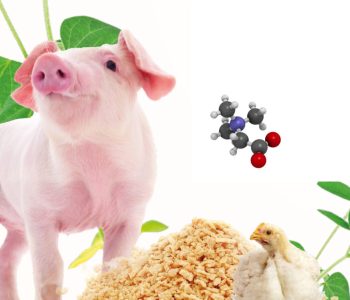KOLIN PLUS: A HERBAL ALTERNATIVE TO CHOLINE CHLORIDE
Introduction
Choline is an essential micronutrient for the growth and performance of swine and poultry.
It serves multiple functions such as:
- Regulating lipid metabolism and transport
- Facilitating neurotransmission
- Contributing to phosphatidylcholine synthesis
- Acting as a methyl group donor, among other roles.
Due to birds’ limited ability to synthesize sufficient choline, their diets require supplementation of this essential nutrient. Choline chloride 60% (CC 60%) is a commonly used synthetic feed additive in swine and poultry rations. However, it is associated with various drawbacks that affect health and productivity, including reduced absorption rates, interactions with other nutrients, the production of trimethylamine (TMA) in the gastrointestinal (GIT) tract, leading to respiratory distress, and increased feed costs, among others.
Testing a natural alternative to choline chloride
- Product being tested
KOLIN PLUS serves as an environmentally friendly substitute for CC 60% and is produced by M/s Natural Remedies Pvt Ltd, based in Bengaluru, India. Numerous poultry experimental models have validated the effectiveness of KOLIN PLUS in improving broiler performance.
- Materials & Methods
In a choline deficient (CD) model created artificially, Cobb birds were randomized into four groups as follows:
The CD-induced model was created by substituting a portion of soybean meal in the broiler diet with soy protein isolate.
- Results
The findings of the study demonstrated that KOLIN PLUS effectively reversed the adverse effects caused by the CD diet, similar to the CC 60% group, in broilers (Table 1).
Table 1: Performance validation in induced CD model
For body weight $p<0.001 (significantly decreased) as compared to normal control, *p<0.05, **p<0.01, ***p<0.001 (significantly increased) as compared to CD. For FCR $p<0.001 (significantly increased) as compared to normal control and *p<0.05, **p<0.01, ***p<0.001 (significantly decreased) as compared to CD
Furthermore, a conventional model of naturally occurring choline deficiency was employed, where Ross broilers were categorized into three groups: Normal control (N), N + Choline chloride (CC) 60%, and N + KOLIN PLUS. The birds in the Normal control group were provided with a diet lacking choline supplementation.
The research findings demonstrated that incorporating KOLIN PLUS in the diet of broilers with natural choline deficiency resulted in enhanced body weight and feed conversion ratio (FCR) comparable to the group supplemented with CC 60% (Table 2).
Table 2: Performance validation with standard model
- Conclusions
KOLIN PLUS demonstrates promising results in enhancing performance in both artificially induced and natural choline deficiency (CD) models, potentially attributed to its significant involvement in fat metabolism, mobilization, and optimal muscle growth.
Additionally, it exhibits comparable efficacy to the feed additive CC 60% even at a lower dosage in both poultry and swine. This makes KOLIN PLUS a cost-effective option that improves feed economics.
Furthermore, it is bioavailable, compatible, non-corrosive, and safe for use. Therefore, KOLIN PLUS serves as a suitable alternative to synthetic CC 60% in swine and poultry diets.
You may also like to read: “Phytogenics and their applicability in sustainable poultry production.”
Bibliographical References
- Selvam R, Saravanakumar M, Suresh S, Chandrasekeran C V., Prashanth D. Evaluation of polyherbal formulation and synthetic choline chloride on choline deficiency model in broilers: Implications on zootechnical parameters, serum biochemistry and liver histopathology. Asian-Australasian J Anim Sci. 2018;31(11):1795-1806. doi:10.5713/ajas.18.0018.
- Parsons CM, Leeper RW. Choline and methionine supplementation of layer diets varying in protein content. Poult Sci. 1984;63(8):1604-1609. doi:10.3382/ps.0631604.
- D’souza, P., & Selvam, R. (2022). Evaluation of polyherbal formulation in broilers fed high energy diet: Implications on zootechnical parameters, fat accretion, and serum L-carnitine levels. Journal of Advanced Veterinary and Animal Research, 9(1), 166.
- Prashanth D’Souza, Saravanakumar Marimuthu, Arigesavan Kaninathan, Ramasamy Selvam. Modulatory effect of Kolin PlusTM, a polyherbal formulation on muscle growth development in choline deficient diet model of broilers: a genomic analysis using microarray. Int J Sci Rep. 2019 Dec;5(12):344-350
